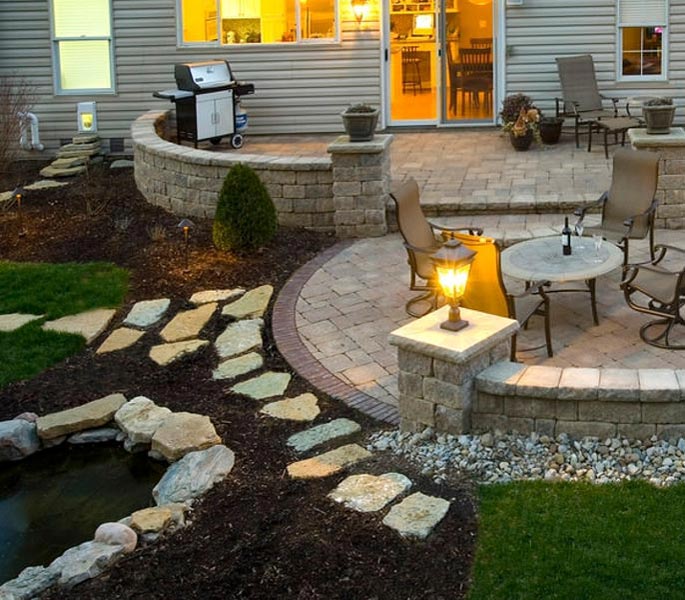Irrigation
Irrigation Design & Installation by the General
Most commercial and residential irrigation systems are “in-ground” systems, which means that everything is buried in the ground. With the pipes, sprinklers, and irrigation valves being hidden, it makes for a cleaner, more presentable landscape without garden hoses or other items having to be moved around manually. This does, however, create some drawbacks in the maintenance of a completely buried system.

Water Source & Piping
The beginning of a sprinkler system is the water source. This is usually a tap into an existing (city) water line or a pump that pulls water out of a well or a pond. The water travels through pipes from the water source through the valves to the sprinklers. The pipes from the water source up to the irrigation valves are called “mainlines”, and the lines from the valves to the sprinklers are called “lateral lines”. Most piping used in irrigation systems today are HOPE, MOPE, PVC, EX, Poly, Poly NSF, and plastic pressure pipes due to their ease of installation and resistance to corrosion. After the water source, the water usually travels through a check valve/ or PVB. This prevents water in the irrigation lines from being pulled back into and contaminating the clean water supply.
Controllers, Zones & Valves
Most Irrigation systems are divided into zones. A zone is a single Irrigation Valve and one or a group of sprinklers that are connected by pipes. Irrigation Systems are divided into zones because there is usually not enough pressure and available flow to run sprinklers for an entire yard or sports field at once. Each zone has a solenoid valve on it that is controlled via wire by an Irrigation Controller. The Irrigation Controller is either a mechanical or electrical device that signals a zone to turn on at a specific time and keeps it on for a specified amount of time. “Smart Controller” is a recent term used to describe a controller that is capable of adjusting the watering time by itself in response to current environmental conditions. The smart controller determines current conditions by means of historic weather data for the local area, a soil moisture sensors (water potential or water content), weather station, or a combination of these.
Sprinklers
When a zone comes on, the water flows through the lateral lines and ultimately ends up at the irrigation Sprinkler heads. Most sprinklers have pipe thread inlets on the bottom of them which allows a fitting and the pipe to be attached to them. The sprinklers are usually installed with the top of the head flush with the ground surface. When the water is pressurized, the head will pop up out of the ground and water the desired area until the valve closes and shuts off that zone. Once there is no more water pressure in the lateral line, the sprinkler head will retract back into the ground.
